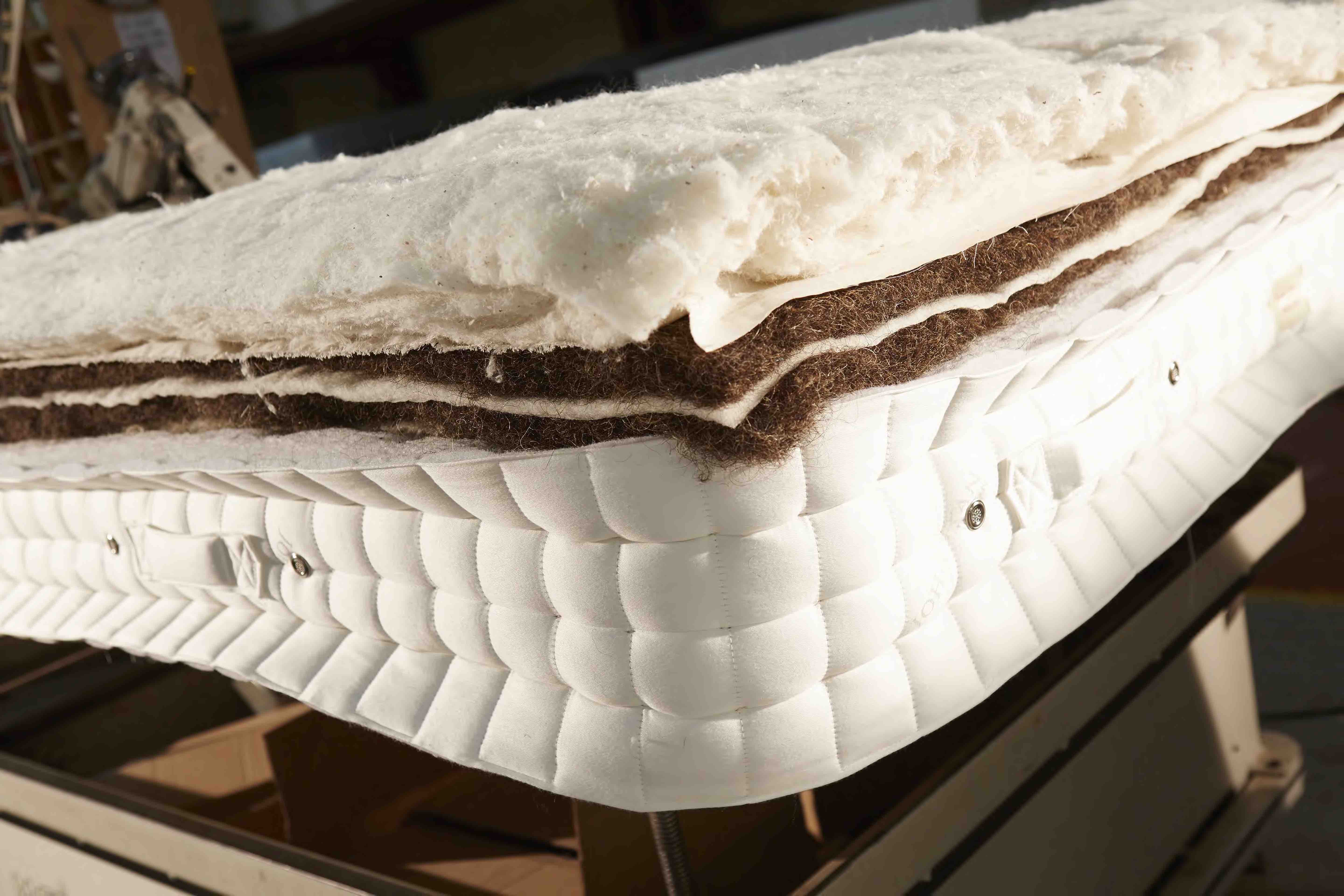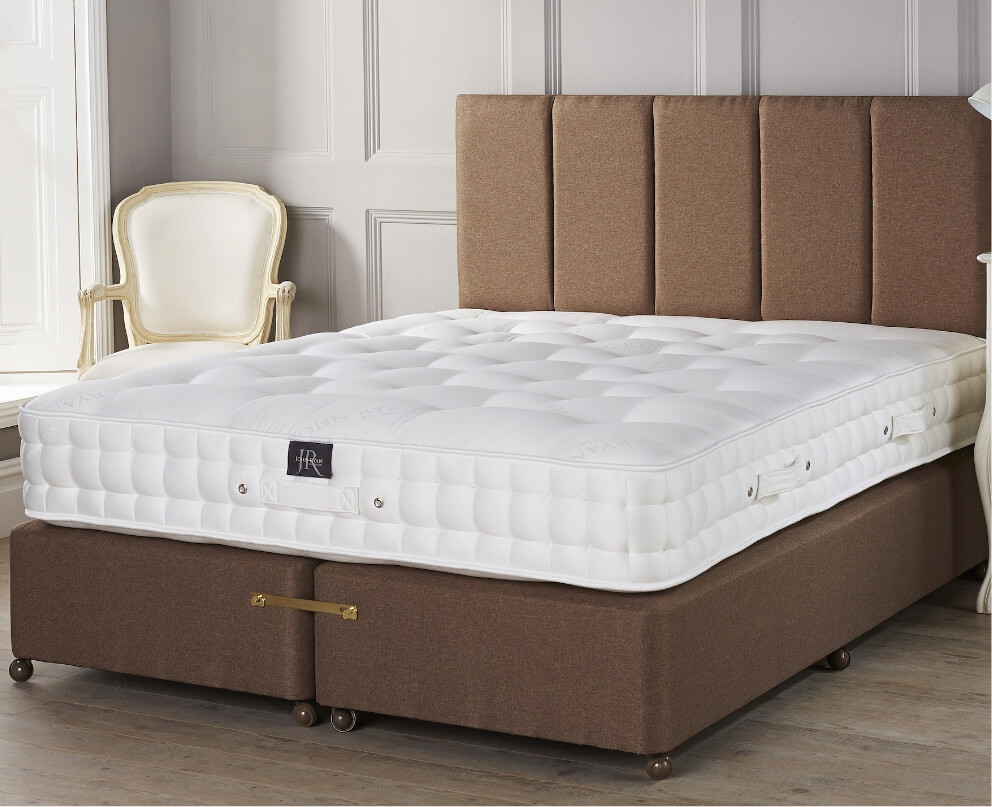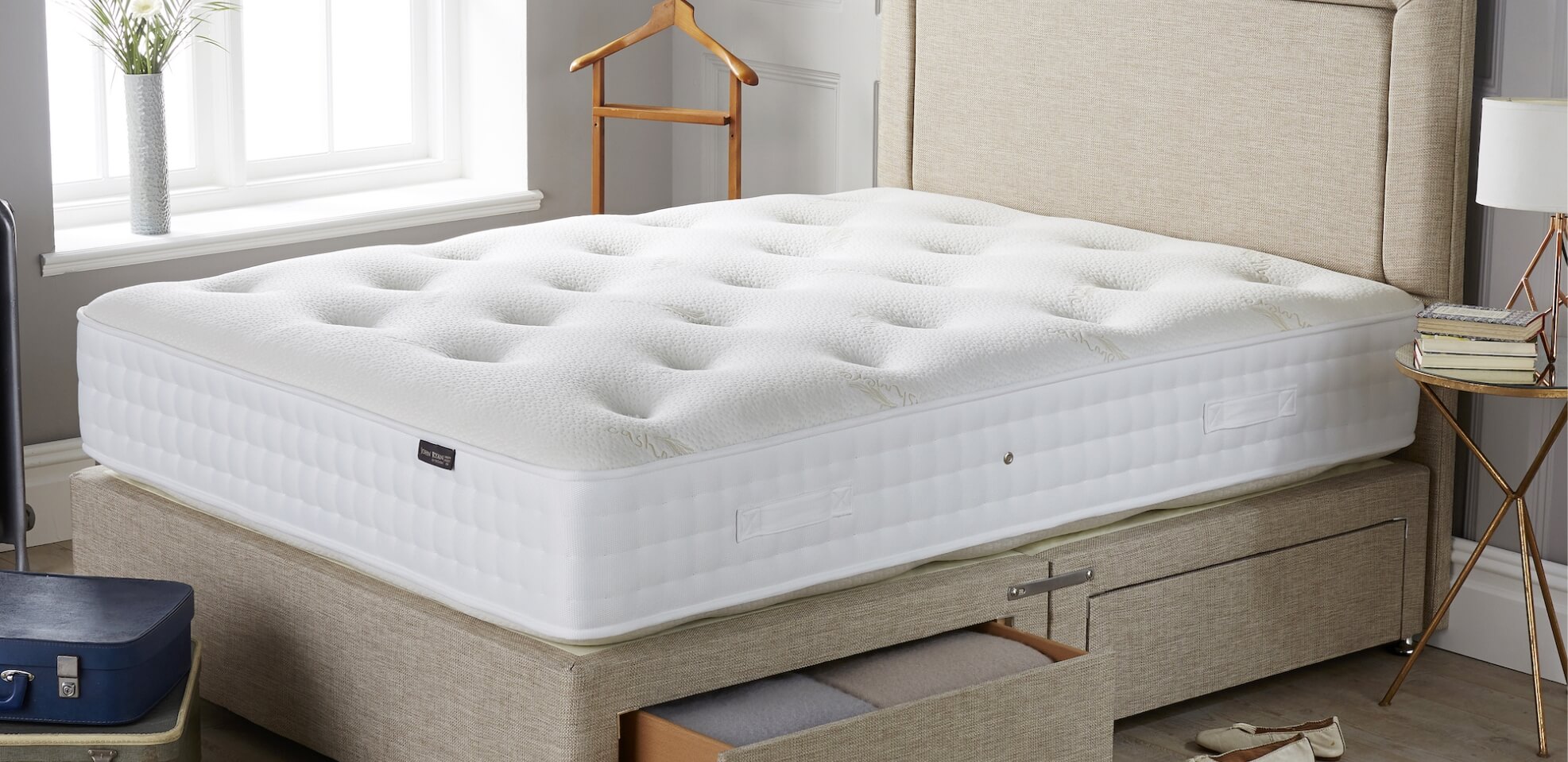Mattress Science
August 2020How to choose a bed for an ME/Myalgic encephalomyelitis sufferer
This article aims to better equip you if you have Myalgic Encephalomyelitis in making the best mattress choice to help you get a restful nights sleep based on our experience in making mattresses and helping you avoid being duped by retailers with a ‘one size fits all’ approach for ME sufferers.

- What is Myalgic Encephalomyelitis?
- What causes Myalgic Encephalomyelitis?
- How does Myalgic Encephalomyelitis affect sleeping?
- How to choose a mattress for someone with ME/Myalgic Encephalomyelitis
- Mattress advice for people with Myalgic Encephalomyelitis
What is ME/Myalgic encephalomyelitis?
Myalgic encephalomyelitis (ME) is a fluctuating chronic neurological condition. Listed by the World Health Organisation as ‘Post Viral Fatigue Syndrome’ the illness is usually thought to be brought on after a viral infection of some sort. However, there is no clearly identified marker for the illness. This can be really frustrating for sufferers as the causes and effects can differ in the extreme from patient to patient.
ME/Myalgic Encephalomyelitis is sometimes classified as a Chronic Fatigue Syndrome which causes severe post-exertional malaise. Meaning the body and brain’s unable to recover after expending even small amounts of energy. Which compounds the fatigue even further. Symptoms such as fatigue, malaise, joint & muscle pain, dizziness and/or nausea and a disturbed sleep cycle are all common in ME sufferers. It sometimes can be confused with Fibromyalgia which is a separate condition however, some of the mattress advice is similar for both conditions where the symptoms overlap.

What causes ME/Myalgic encephalomyelitis?
The causes of ME are not well known. The majority of research indicates that the majority of sufferers have experienced some viral infection with the ME becoming a side effect of that previous illness. Other causes for ME maybe trauma or genetic with people experiencing ME. Rather than being a standalone illness, it is considered by most medical professionals to be a consequence of another virus like herpes, chickenpox, HHV-6 and CMV. It must be stressed that there is a huge variety of potential causes making it incredibly hard to identify the exact cause of the illness. A number of ME sufferers have stated that they have started to suffer from Myalgic Encephalomyelitis without any warning signs.
It may come on even years after the initial triggering virus or trauma. If you believe you’re suffering from ME then we always recommend you go and seek medical assistance from your GP as a matter of course. What’s clear is that each person that has ME can have very different symptoms with the condition meaning that tailored advice when it comes to sleep is essential.
How does ME/Myalgic encephalomyelitis affect sleep?
One of the common complaints from people struggling with Myalgic Encephalomyelitis is the impact on sleep. ME can have disastrous effects on your sleep cycles causing for an endless vicious cycle of poor nights sleep. Thus leading to even more fatigue and frustration in sufferers. There are also a number of other sleep issues that sleepers with ME may struggle with.
Sleep disturbance including:
- Difficulty getting off to sleep
- Unrefreshing & restless sleep
- Waking for long periods in the early hours
- Sleep reversal (e.g sleeping from 4am till midday rather than evening to morning)
- Hypersomnia (sleeping for a long time).
ME has a variety of symptoms which include fatigue, pain, migraines & disrupted sleep
There is no one size fits all. If you have ME you need tailored advice when choosing a mattress


How to choose a mattress for someone with ME/Myalgic encephalomyelitis?
There’s plenty of information online from certain retailers offering the perfect sleep system for someone with ME. However, what they all fail to address is the fact that each person with ME may have completely different presenting issues. It’s these specific independent issues that need careful consideration when shopping for a new mattress. Quite often the key questions that need to be asked to help tailor a solution are completely avoided to the detriment of you the buyer. Given ME presents a variety of symptoms and side effects time really does need to be taken to address them carefully on a case by case basis.
1. Choose the correct spring tension for your weight
The first step in choosing a suitable mattress is to work out what spring tension your bodyweight requires. This is the first pitfall that many new mattress shoppers fall into. Many of the Bed retailers will ask what ‘feel’ you want from a mattress and then incorrectly suggest a spring tension that ‘matches’ this. This is completely incorrect and means you can end up on a mattress that’s completely incompatible for you.
The spring tension you require is entirely dictated by your height and body weight and does not provide the ultimate ‘feel’ or comfort of the mattress. if you’ve got ME and already have difficulty sleeping then the wrong spring tension will only add to this. It’s frustrating that retailers and manufacturers have a adopted the ‘soft, medium & firm’ classifications for springs as this misleads the customer into thinking this, therefore, means a certain ‘feel’ of the mattress. All these classifications relate to is the gauge or tension of the spring. These tensions have been manufactured to accommodate various weight ranges, ie a soft spring is for someone 8 stone (50kg) and under and a firm spring is only suited to people 17 stone (108kg) and over for example.
| Spring Tension | Wire diameter (Gauge) | Weight Range |
|---|---|---|
| Soft | 1.2mm | Bespoke Tension (Please Call) |
| Medium | 1.4mm | Upto 16 stone |
| Firm | 1.6mm | 16 stone plus |
| Extra Firm / Orthopaedic | 1.9mm | 20 stone plus |
2. Pick upholstery layers to provide the overall feel of the mattress
The next step is to then carefully research and select fibres that when layered on top of the spring system will provide you with the overall ‘feel’ or ‘comfort level’ of the mattress. For example, certain fibres will provide a soft feel such as Bamboo, Wool and Alpaca. Other fibres such as foams, coir and Cashmere will provide a firmer feel in a mattress. It’s also worth bearing in mind that natural fibres are far more breathable and long-lasting than man-made synthetic polyesters and foams. If you’re spending a lot of time in bed it’s worthwhile investing in fibres that will last and offer continued comfort. Cheaper synthetic materials have a habit of quickly compressing and breaking down. We provide a comfort chart on each of our mattresses so you can identify the feel and comfort of each ones depending on your needs. For some ME sufferers, a softer more forgiving mattress enables them to move and turn easier at night.
For other people with ME/Myalgic encephalomyelitis, a more medium feel gives them the support and robustness they may need if spending large amounts of time in bed. This is where tailored advice is crucial to help you work out the exact requirements for your mattress. This is usually the part of the process where the retailers will be scratching their heads as they have already incorrectly identified a spring tension as the ‘feel’ of the mattress meaning any selection of fibres is largely irrelevant to getting you a suitable mattress. As the spring tension is incorrect the mattress will never truly feel the correct and will either over or under support you leading to discomfort.

Mattress Advice for people with Myalgic encephalomyelitis/ME
The key to choosing a suitable mattress for someone with ME or Chronic Fatigue Syndrome is by choosing the correct spring tension and then the comfort layers. We can’t stress this enough and this is why so many people with ME are struggling with sleep. Based on our decades of experience most people with pain conditions are recommended orthopaedic or firm mattresses which just exacerbate the issue. Let’s have a look at some of the people we have helped find a suitable mattress to assist them in sleeping better with ME.
Sleeper with Myalgic encephalomyelitis spending most of her time in bed
One client we helped was Elizabeth who was really suffering with her ME and spending a lot of time in bed. Her mattress was on a slatted base and she found it to be dipping after 18 months. She found it uncomfortable and made sleeping almost impossible. We firstly advised Elizabeth that she really needed to ensure that her mattress had the correct spring tension for her bodyweight rather than focusing solely on the spring count which can be misleading when it comes to support. The maximum number of full-sized pocket springs you can fit in a kingsize mattress, for example, is 2000. So any number over this is based on dual-layered springs which may not necessarily be of direct benefit to ME sufferers. They may also be using micro spring to increase the spring count but inadvertently reducing the overall support of the mattress in doing so.

After much discussion with Elizabeth to identify all the issues, we recommended the Artisan Bespoke 004 for Elizabeth and for her to board over her slatted base. This is because it was causing her mattress to sag between the slats. Especially given the amount of time she was spending in bed. Your mattress base is crucial if you’re spending a lot of time in bed. A base that’s supportive and consistent is key which is why we always recommend boarding over slats.
Slatted bases should always be boarded over to prevent the mattress sagging between the gaps
Chronic fatigue sleeper needing help
Jaqueline got in touch with us as she had been diagnosed with Chronic Fatigue Syndrome and was finding sleeping really difficult. She had put on some weight and had been advised by a mattress retailer to choose a pillowtop mattress. She got in touch with us as the advice she had received didn’t sit right with her and wanted a second opinion on the mattress recommendations. The first issue was the fact that she had been recommended a pillowtop mattress. We’ve written extensively about why pillowtop mattresses are such a bad idea here. The pillowtop is a topper that’s permanently glued or stitched to the top of the mattress, such as the Premier Inn Hypnos mattress. They feel great at first but because they’re made of soft fibres they compress very quickly. As you can’t remove or turn them you are then left with a lumpy bumpy one-sided mattress. In our professional opinion, they are a complete waste of time and result in a one-sided mattress with a short self-life.
The next point was that Jaqueline had already told us she was having to move around a lot at night to get comfortable meaning that a firmer feel mattress was out of the question. Firmer feel beds can put excess pressure on joints or painful parts of the body causing excessive turning and fidgeting. Whereas a medium feel in the upholstery layer would be more forgiving on joints allowing for a consistent nights sleep and less movement to readjust during the night.
We recommended that Jaqueline considered at our Origins 1500 which is a medium feel mattress or our Artisan Naturals also a medium feel but with 85% Natural fibres. Both of which are two-sided without the dreaded pillowtop!

Summary
When it comes to choosing a mattress for ME or other Chronic Fatigue Syndromes it is key that you first identify the support based on your bodyweight. Nearly every customer who has been in touch to complain about their existing mattress from other bed retailers has referenced a completely unsuitable spring tension for their weight. Without the correct tension then all other research as to the fibres and fillings of the mattress becomes futile. The next step is to then identify the overall feel of the mattress from the comfort layers. With pain conditions, it is not always advisable to choose a firmer feel in the upholstery layers. Firmer feels can lead to restlessness and increased pain in joints.
In our experience, a medium feel in the upholstery layer is best, especially if your budget can stretch to natural fibres that are both breathable and incredibly resilient. Lastly if spending over 10 hours a night in your bed you will need to ensure that the base it is on is offering sufficient support to the mattress. By getting someone to turn and rotate the mattress you can increase the lifespan. However, if you’re spending most of your day in bed it goes without saying that the mattress will have a shorter lifespan due to this increased use. There are however plenty of options to help you get a restful nights sleep with ME and a maximum lifespan out of your mattress. Our small expert team can help provide you with the necessary advice so you can find the correct mattress to help with your condition. Given the fact that ME has such a broad range of symptoms specific to you, it goes without saying that you should afford yourself the same level of care!
Why not give us a call on 0161 437 4419 or if you prefer to get in touch online drop us a note in the form below and we will get back to you.

Dreaming of the perfect nights sleep?

Ask us a question
There are over 6000 questions and answers submitted by you on all questions about mattresses and bed problems. Enter a keyword such as Vi Spring, John Lewis beds, bad back or Memory Foam and see if your question has already been answered.
If you can’t find an answer in knowledge hub, ask a new question. We aim to respond to all questions within one working day.
Newsletter
Enter your email to join our newsletter. We’ll send you occasional news and mattress expertise.
